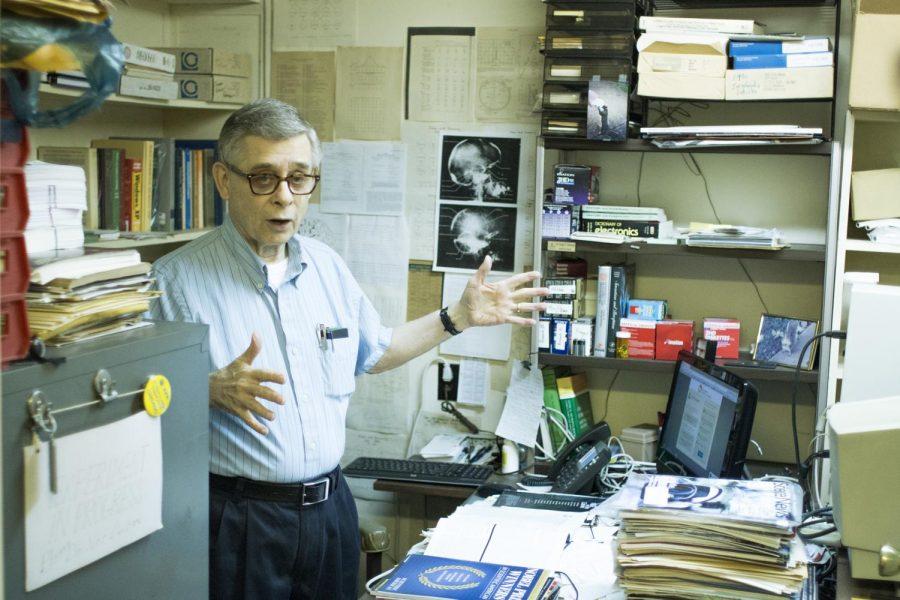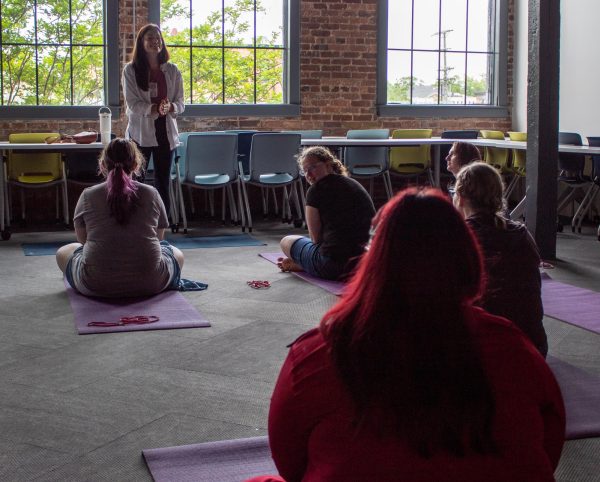Retired professor continues to work at university
October 21, 2016
A UNA professor who retired in 1998 remains in “the dungeon.”
Professor Emeritus of Psychology George Robinson is the last professor to have an office in the basement of the Math Building, which the psychology department affectionately calls the dungeon, he said.
“When I first got here in 1970, that was my office, and it still is,” Robinson said. “They told me I could have another office somewhere else, but I figured I better keep that one because no one in their right mind would compete for it.”
Although his lab has consistently been in the basement, Robinson has also had an office in the Math Building and Wesleyan Hall, he said. After retirement, Robinson returned to the dungeon and began a position as an adjunct that ended in 2010.
In addition to housing Robinson’s office, the dungeon is also the home of research within the psychology department.
“My number one rule to all research assistants is no one ever goes to the dungeon alone — too isolated and eerie,” said Professor of Psychology Larry Bates in an email. “Of course, Dr. Robinson lives down there, in spite of its eeriness.”
Senior Kelly Melton said she has participated in a few research projects in the dungeon and enjoyed the space.
“It’s private, which is nice, especially when what you’re doing requires your full attention,” she said. “When the research is in a classroom or whatever other place, there’s a lot of distractions.”
However, she said the overall comfort of the area could use improvement.
In addition to research areas, the dungeon also has an abandoned classroom.
Robinson, who once taught in the classroom, said he had an interesting experience there during a dark adaptation lecture.
“I said, ‘For example, if all of a sudden the lights were to go out, and you were to stay in here for 30 minutes, you would become some 10,000 times as sensitive as you are now visually,” he said. “When I ended that sentence, there was a power failure. I could not have timed it better. I had the most attentive group from then on.”
He had to grab a flashlight to continue teaching until the lights came back on, he said.
Bates, who was one of Robinson’s students, said he remembers a lecture Robinson gave on classic conditioning wherein he shocked himself.
“So that we could see how scared he was, he had the sensors for anxiety connected to a speaker, so the pitch would get higher the more anxiety that he had,” Bates said. “So after a shock to himself, he would be a bit more anxious before the next shock.
“So the speaker would start wailing, which would make the class laugh, which caused more anxiety, causing the speakers to wail loudly, which caused our class to nearly riot,” he said. “(It) was absolutely the best single class lecture/demo that I ever saw in all my many, many classes.”
Department Chair of Psychology Richard Hudiburg said in an email that he taught classes in the Math Building’s basement from 1983 to about 1990.
“It was OK to teach there, but I believe the students did not like it very much,” he said.
Some of the experimental rooms in the dungeon are refurbished, such as the one Robinson uses to store his books. After retiring, his wife told him he could not store them in their home, he said.
“She said, ‘Either you can come home or the books can, but not both,’” Robinson said.
He said there also used to be a room housing pigeons and another housing rats.
After the rats appeared in class, Robinson would feed and care for them throughout the rest of their lives, he said.
Although Robinson’s office has changed over the years, it still has some of his equipment from teaching, such as his oscilloscopes. These pieces of machinery test whether or not equipment that uses an electric signal is working correctly.
Robinson’s research in the lab has also included psychophysics, a branch of psychology that examines relations between physical stimulation and psychological response, he said. Some of that research has resulted in publication.
While Robinson continues to stay in the basement, he is still alert of what goes on above ground.
“I keep hearing rumors that they’re going to replace the Math Building with some other building,” he said. “One rumor was that the Math Building was going to be where the new Science Building would be. Then, it was the new Nursing Building. So, I have a keen ear for any sound of bulldozers.”











